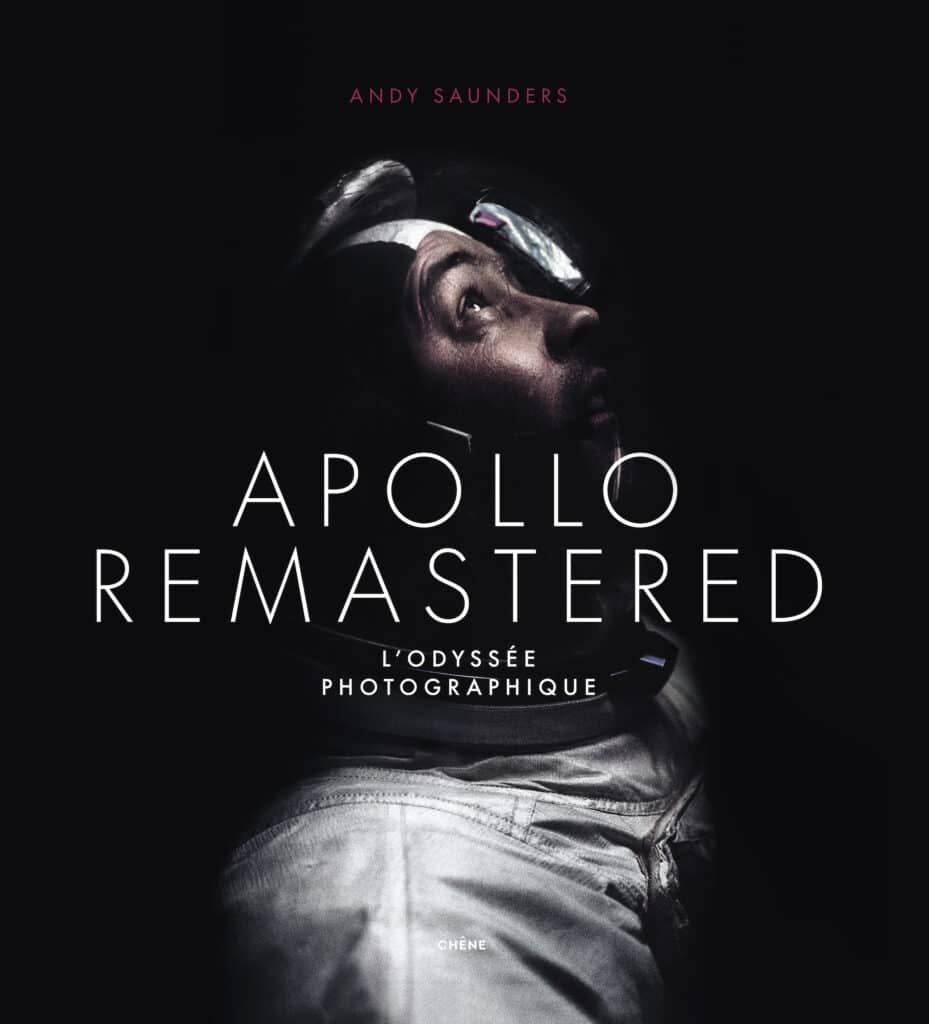The first man on the Moon, the flag salute, the Blue Marble, the Earthrise, the two golf shots…: in his Apollo Remastered, the British Andy Saunders invites us to share these and many other iconic moments. His book is a one-of-a-kind photographic odyssey that retraces eleven Apollo missions, from 1961 to 1972, through 300 digitized, reprocessed, and restored images.
They are a selection from among the 35,000 negatives carefully preserved at the Johnson Space Center in Houston, Texas. Most of these images are known only from copies, to protect the originals from degradation. Saunders now reveals them for the first time in this magnificent book, offering a comprehensive look at this great human epic and the evolution of space photography over the past sixty years.
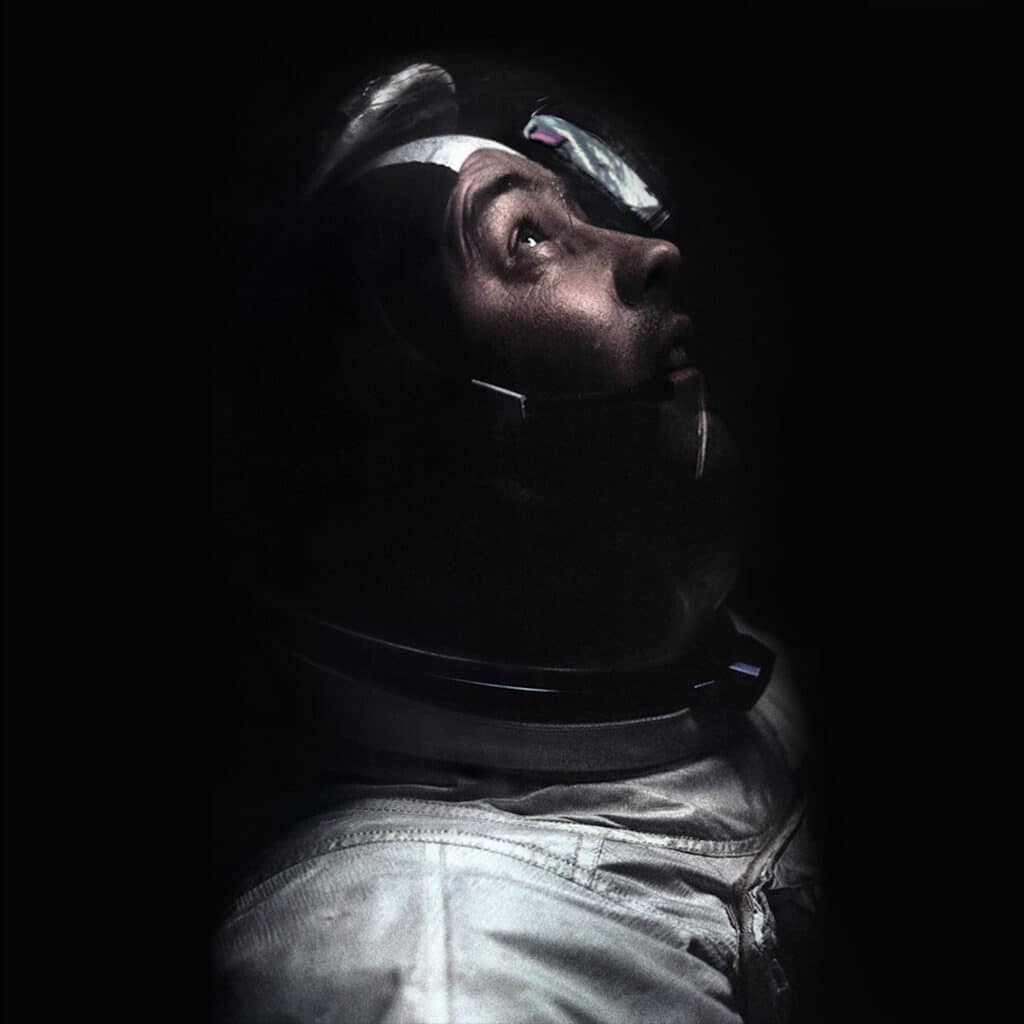
Destination: The Moon!
On July 20, 1969, at 10:56 p.m. EST, Neil Armstrong became the first man to set foot on the Earth’s satellite. Seeing these incredible images was a revelation to the young Andy Saunders who, like many others, had fallen in love with Space and the Apollo program.
This moment has stayed with him forever. Since then, the forty-eight-year-old science writer had molded his career, tying together various fields of interest, including photography, and becoming one of NASA’s foremost digital image restorers. His reputation was sealed in 2019, with the “clearest” image ever obtained of the American astronaut on the lunar soil, released on the fiftieth anniversary of the event.
The book, published by Black Dog & Leventhal, opens with this ultimate dream come true, the seed of which was planted by President John Fitzgerald Kennedy’s legendary speech “We choose to go to the Moon,” delivered on September 12, 1962.
“I’ve obsessed about things ever since I was a child,” explains Andy Saunders. “I loved anything that could fly, but rockets most of all, with the Moon as the ultimate destination. I always wanted to know more about the people who made that journey, about the rockets, the spacecraft, and I wanted to see more and imagine what it would be like to undertake that journey myself.”
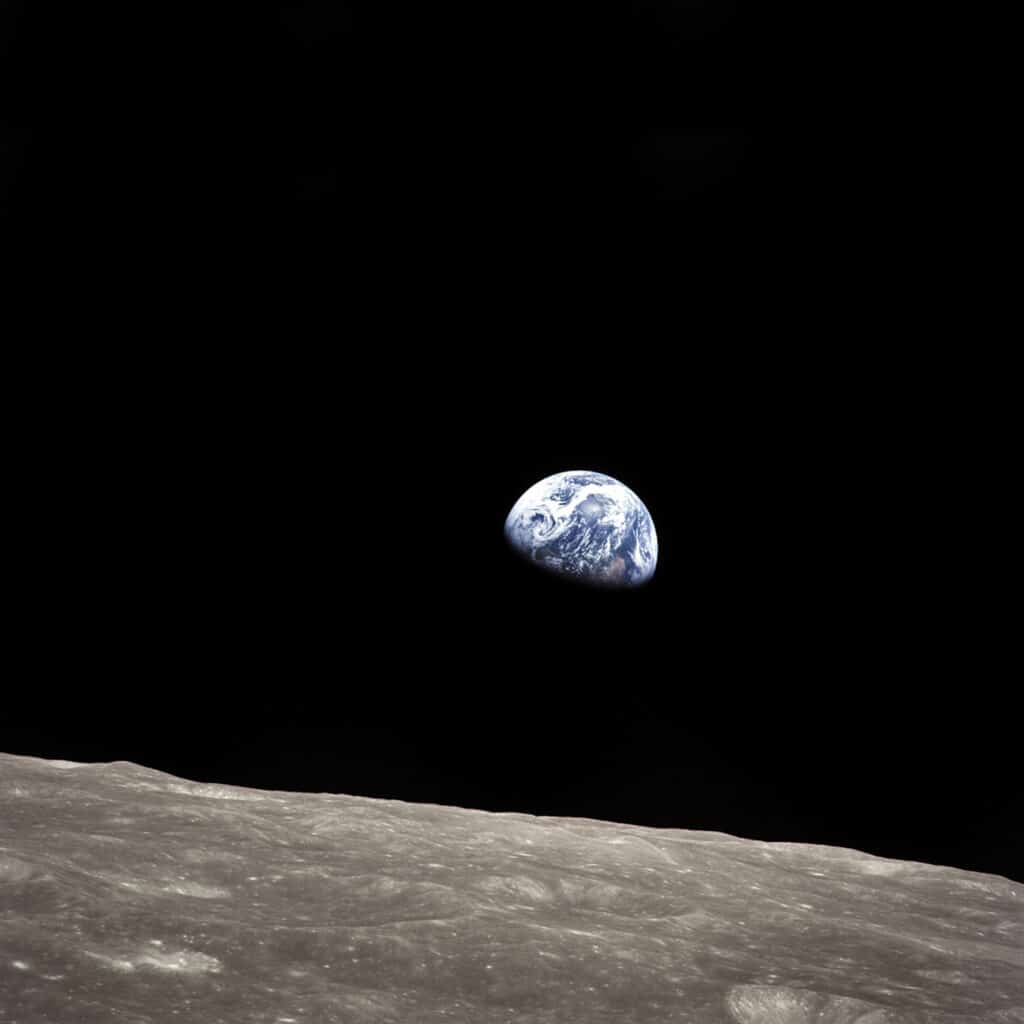
Apollo Remastered probes space photography from all angles and in all its complexity. The author constantly reminds us of NASA’s primary objectives: nothing we see was ever intended to become a historical document; photography was not a PR priority. Yet what emerges are images “that transcend simple factual documentation.”
Enduring memories
Saunders starts off with the Mercury and Gemini missions that paved the way for the lunar program, before moving on to Apollo 7 which inaugurated manned flights in October 1968. This was after the Apollo 1 disaster which had cost the crew their lives. He covers all the missions going forward, through Apollo 17, which splashed down in December 1972.
“To view the curvature of Earth from space and watch as it sinks away into the blackness. … To make fresh footprints and tracks on a pristine celestial body, untouched for 4.5 billion years”: Saunders’s work of restoration brings precision, clarity, sharpness to the images. They feel like they were taken yesterday. “As many as several hundred separate frames are stacked, aligned and processed to produce a more photolike output, revealing detail that has been lost for half a century,” Saunders notes in his Preface.
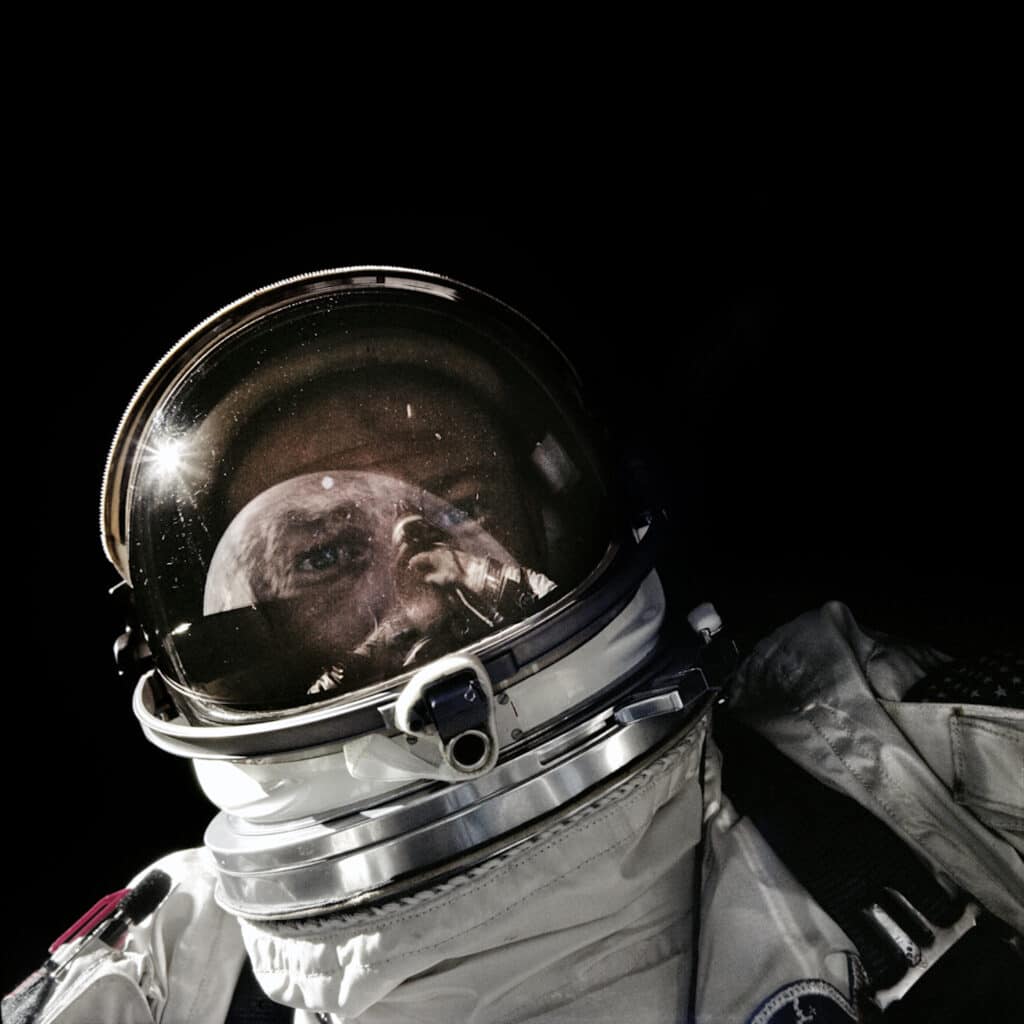
Astronauts Walter Cunningham (Apollo 7), Russell “Rusty” Schweickart (Apollo 9), Fred Haise (Apollo 13), and Charlie Duke (Apollo 16) compared the images against their memories and registered their shock at the encounter. Schweickart (b. 1935), for example, noted: “What really stands out, besides the sheer beauty of Earth, is the brightness of the atmosphere on the horizon; you know, that iridescent blue line that contrasts with the black.
There’s also a stark contrast between that and the absence of noise; it’s emptiness, there’s no air whistling in your ears; and, with the radios being voice-activated, when no one was talking, it was total silence […]. And the line of horizon is very thin; it’s a very, very impressive line […]. When you realize what that beautiful blue line is and what it represents, it’s mindboggling.”
When Saunders is asked what his epiphany was throughout this process, he doesn’t bat an eye: “Nothing can beat the moment I created the image of Armstrong on the Moon, because no such clear picture had existed.
That’s because he was the one holding the camera, and all the images we know are of Buzz Aldrin. But this image was captured on lower-quality, small-format ‘film.’ I had the idea of applying an unusual stacking technique to 16mm film, and I couldn’t believe the result. It was as if I was back in 1969, experiencing this historic moment first-hand. No one has ever seen that moment so clearly, except Aldrin, who was watching from the window of the lunar module.”
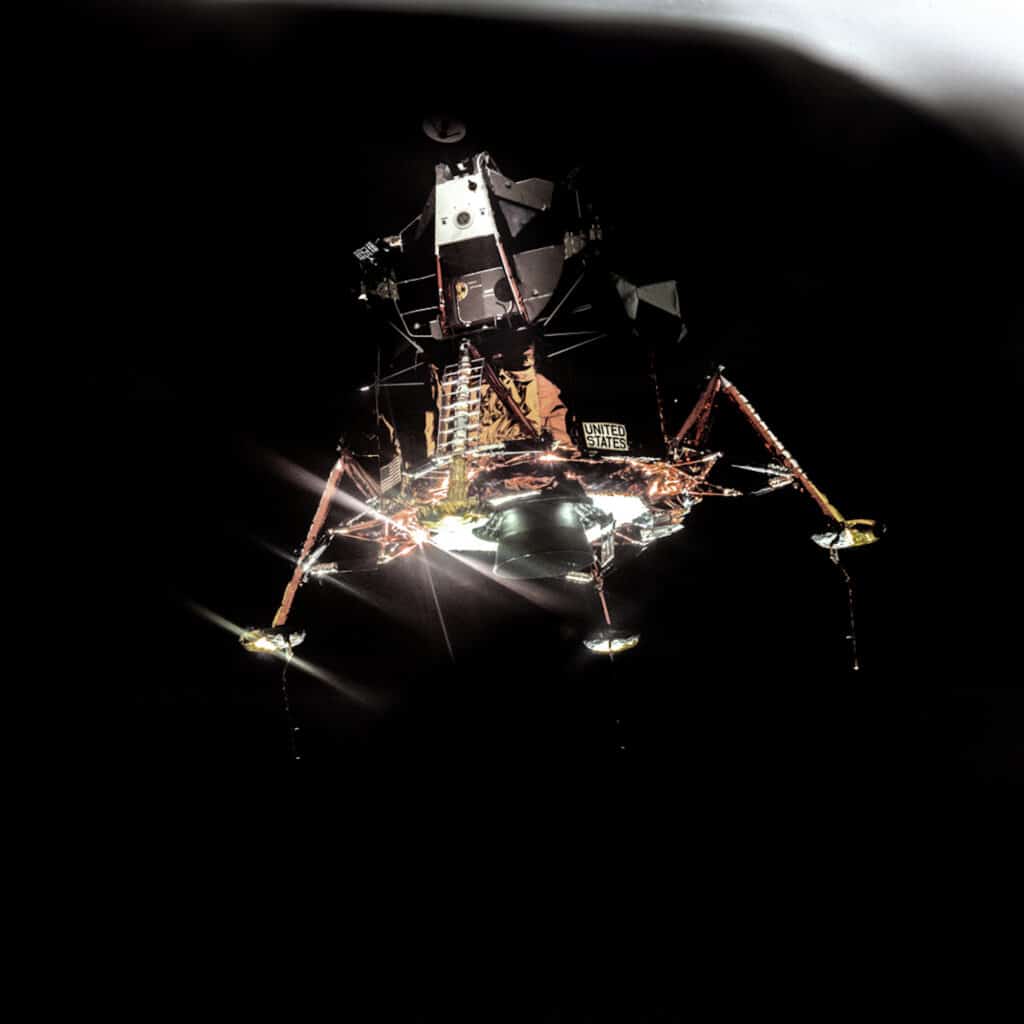
Eleven missions, progress, and a giant leap!
Each voyage builds on the previous ones, which allows us to clearly see the progress every step of the way. Apollo 8 is the mission that provides the world with the first photographs of Earth taken by a human being, including the most iconic: the Earthrise. The year was 1968, the author recalls, a tumultuous year of violence, political unrest, and social injustice in the United States. The flight commander, Frank Borman, now 94, evoked of the thousands of telegrams received: “Thank you, Apollo 8, you saved 1968!”
Apollo 9 produced the portrait, now restored in beautiful chiaroscuro, of the astronaut James McDivitt, which graces the book’s cover. McDivitt died on October 13, 2022 at the age of 93. Apollo 10, which was a dress rehearsal before the next great page in history, provided the first live color television broadcast from Space.
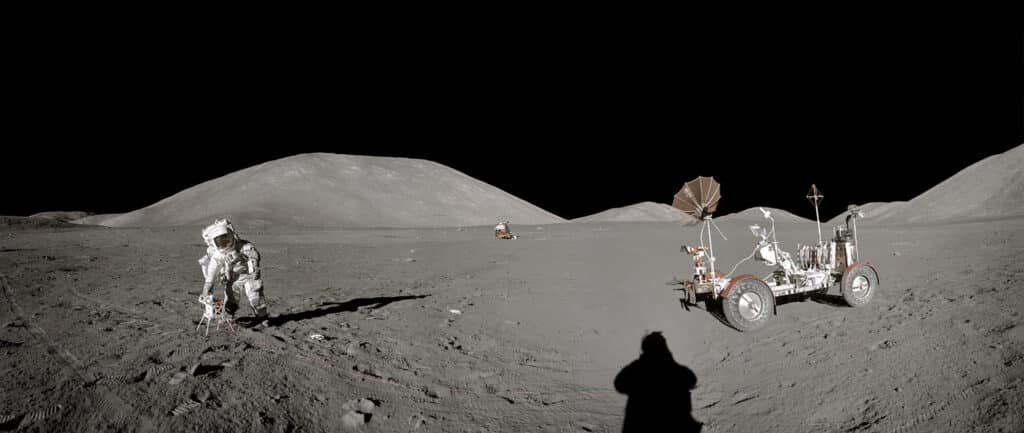
Apollo 11 fulfilled JFK’s wild dream of a lunar landing formulated seven years earlier. The pinnacle of the mission was one legendary photograph and two sentences by Neil Armstrong (1930–2012): “Houston, Tranquility Base here. The Eagle has landed,” followed a few hours later by: “That’s one small step for man, one giant leap for mankind.” Buzz Aldrin topped it off with his “magnificent desolation,” before planting the first American flag on extraterrestrial ground.
Apollo 13 came down in history with the dramatic rescue of the crew, made up of James Lovell (b. 1928), John Swigert (1931–1982), and Fred Haise (b. 1933). The exploit was transposed to the cinema by Ron Howard, starring Tom Hanks, Kevin Bacon, and Bill Paxton. The mission is now associated with the famous phrase: “Houston, we have a problem.” Apollo 13’s reentry rekindled the interest of the American public in the space program. Glued to their television sets, viewers feverishly awaited the return of the astronauts who had lost communication for nearly a minute and a half before their capsule finally splashed down in the Pacific.
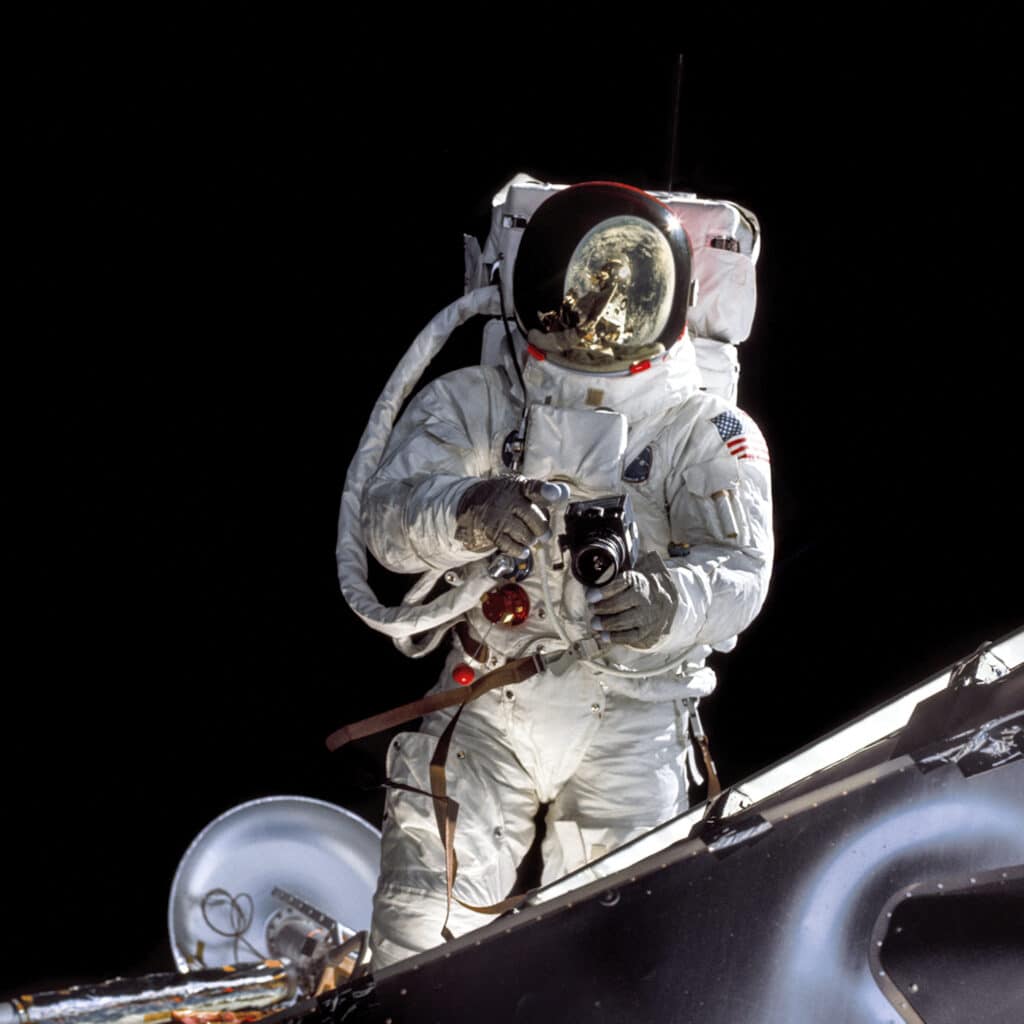
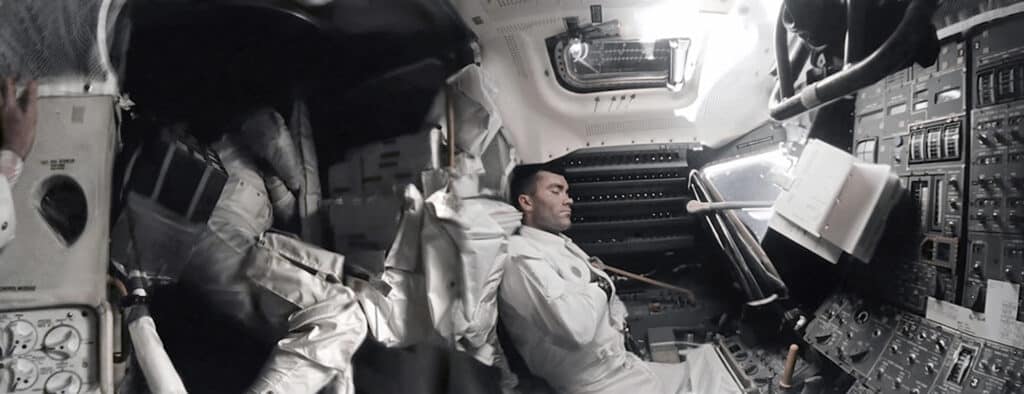
Apollo 14 brought back two unusual images of Alan Shepard (1923–1998), the first American in space, hitting a golf ball on the lunar surface. As he recalled years later: “If somebody had said before the flight, ‘Are you going to get carried away looking at the Earth from the Moon?,’ I would have said, ‘No, no way.’ But yet when I first looked back at the Earth, standing on the Moon, I cried.”
The final mission, Apollo 17, broke many records. Above all, it created the “most requested image in the NASA archives” and the “most reproduced image of all time,” known as “The Blue Marble.” Eugene A. Cernan (1934–2017), the last man to set foot on the dusty surface, remembers in a laid-back, existential tone: “There you were, a quarter of a million miles from Earth, laying in a hammock in a little tin can… [thinking], ‘Here I am; I’m really on the Moon. What should I be doing that I’m not doing? How can I take advantage of this? Is it real? Is it a dream?’”
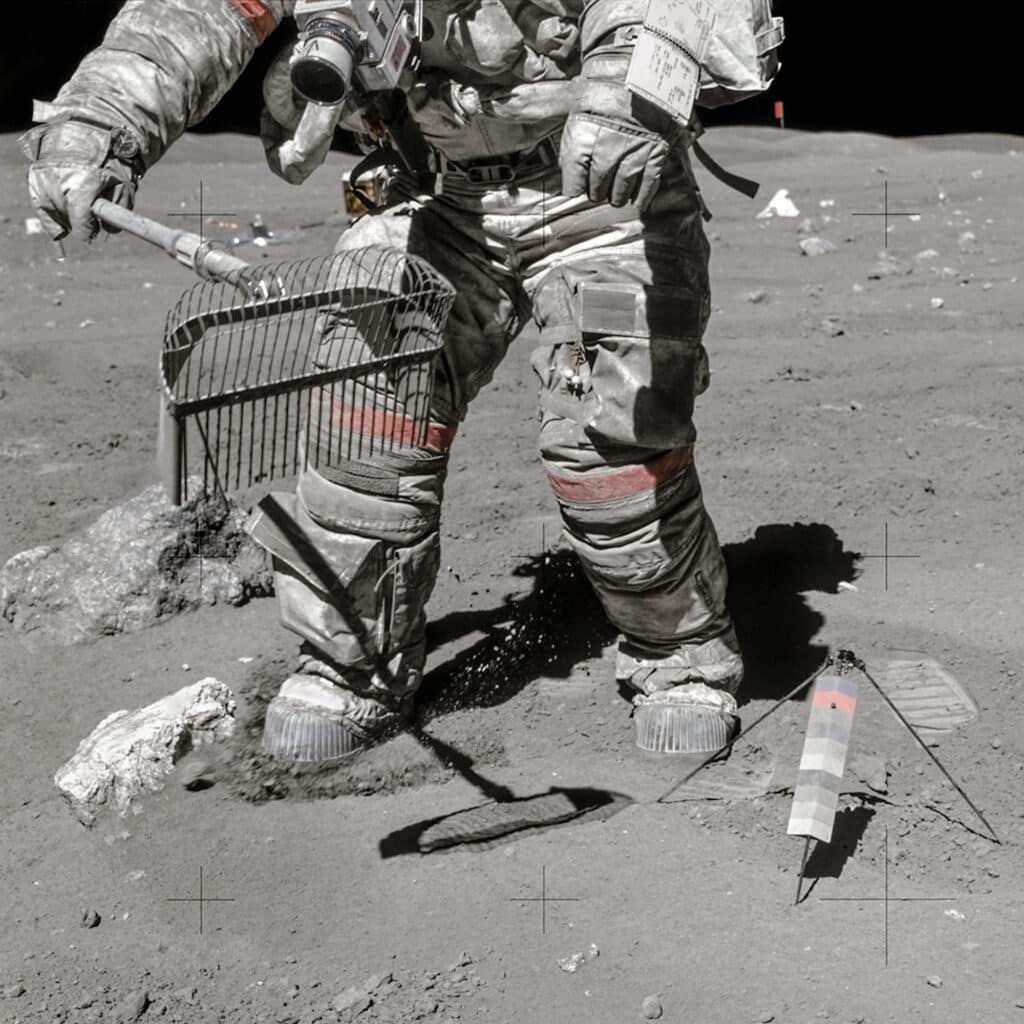
Hasselblad and NASA
As you peruse the 430-page volume, you are captivated all the way through, down to the final fascinating chapter on the evolution of the medium over the course of the three space programs developed in fierce competition with the USSR.
“With Mercury, space photography was born. With Gemini it struggled toward maturity, so that Apollo space photography would give you and me, indeed the whole world, an opportunity to reach out and practically touch the Moon,” summarized Richard W. Underwood (1927–2011), former NASA Chief of Photography, Mercury, Gemini, and Apollo.
Saunders then moved on to discussing the photographic equipment used: the cameras, lenses, telephoto lenses, and film. John Glenn (1921–2016) was the first astronaut to purchase a $40 camera (35mm Ansco Autoset by Minolta) for the Mercury-Atlas 6 mission. Saunders especially highlights the astronauts’ passion for “general interest” photography. In 1967, the pilot and astronaut Deke Slayton (1924–1993) “made the first formal request for photography to be integrated into the astronauts’ training.” They were given a Hasselblad to use at home.
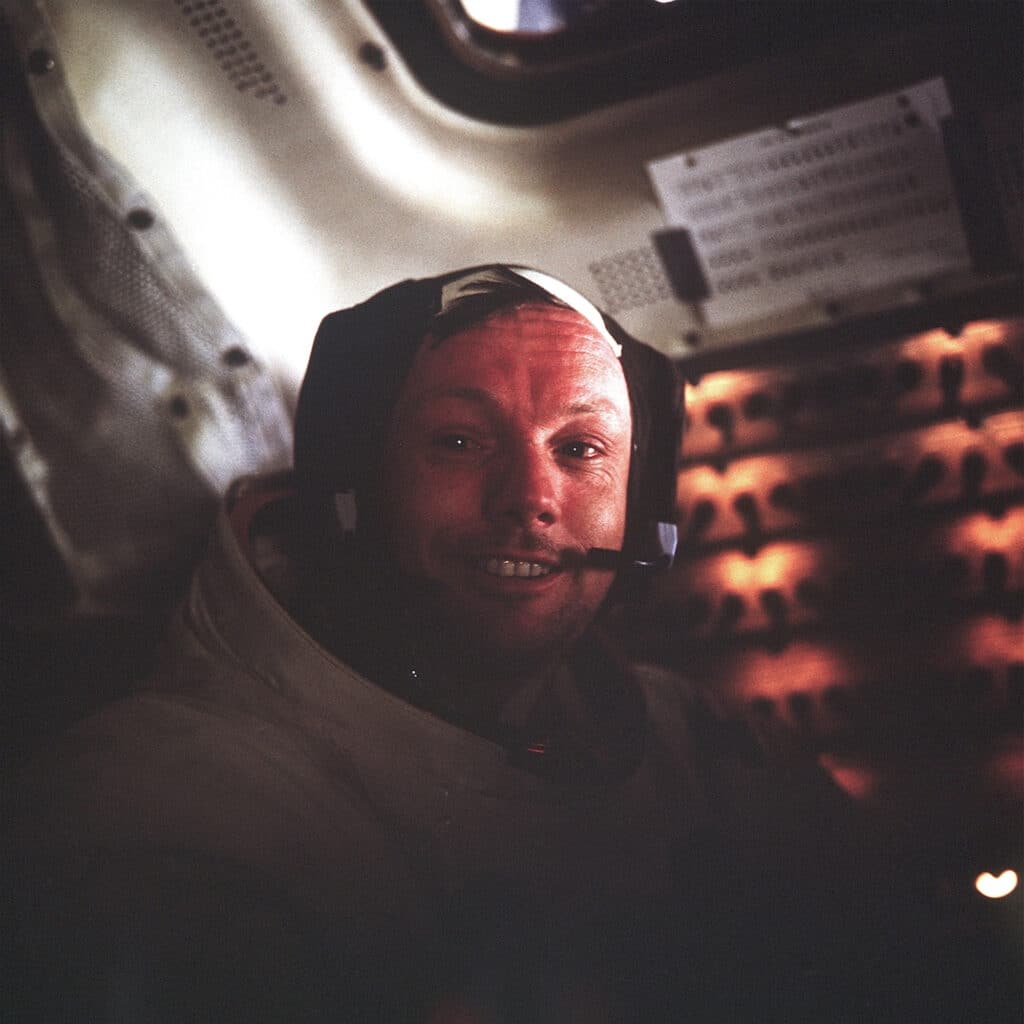
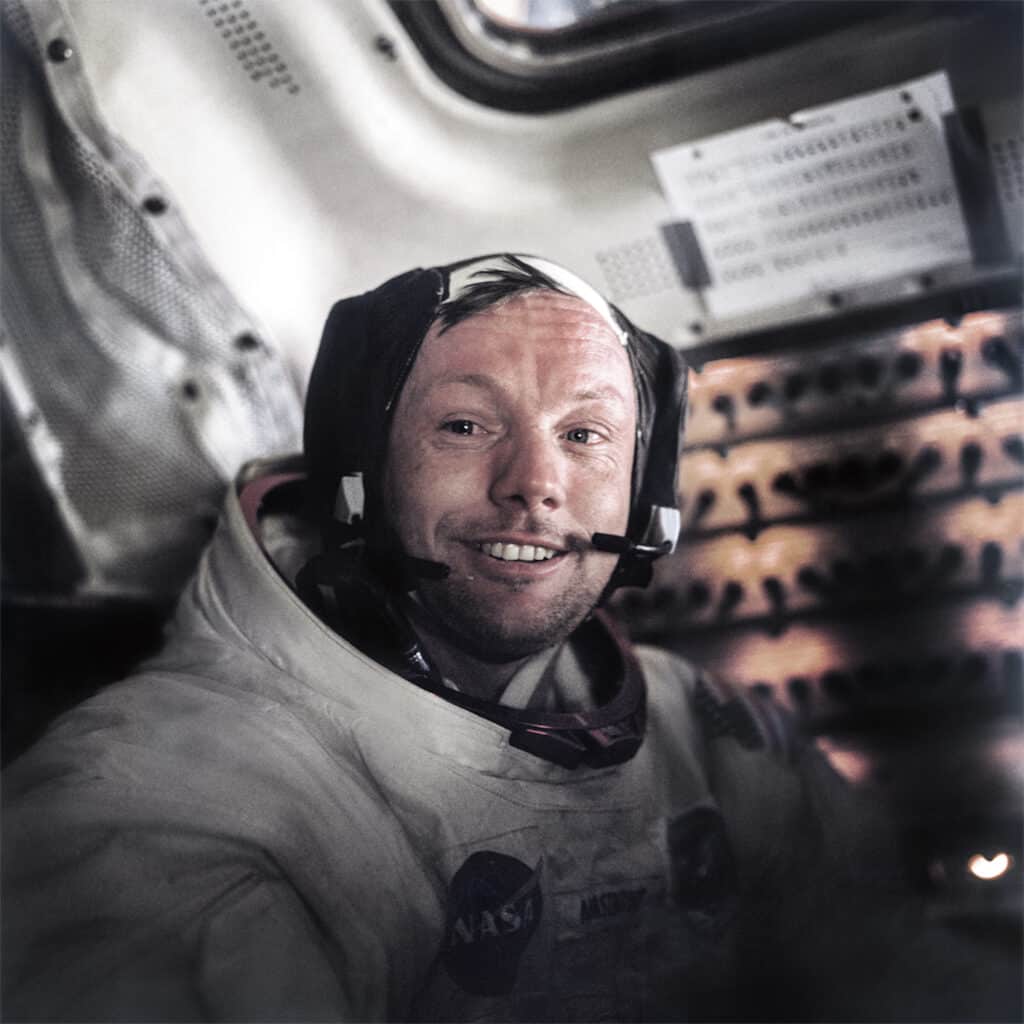
Saunders delves into the various techniques and functions of the equipment, focusing on this breakthrough collaboration between Hasselblad and NASA. He reviews the importance of different light sources, color rendering, and adjustments to improve the details in this restoration, such as reducing the glare on the astronauts’ visors to better reveal their faces. Similarly, the lunar surface is analyzed via photos of Buzz Aldrin’s boot prints and the need for panoramic sequences and how they were made.
To conclude this fascinating story, Richard W. Underwood noted with foresight: “You know, when you get back, you’re going to be a national hero, but those photographs, if you get great photos, they’ll live forever…”
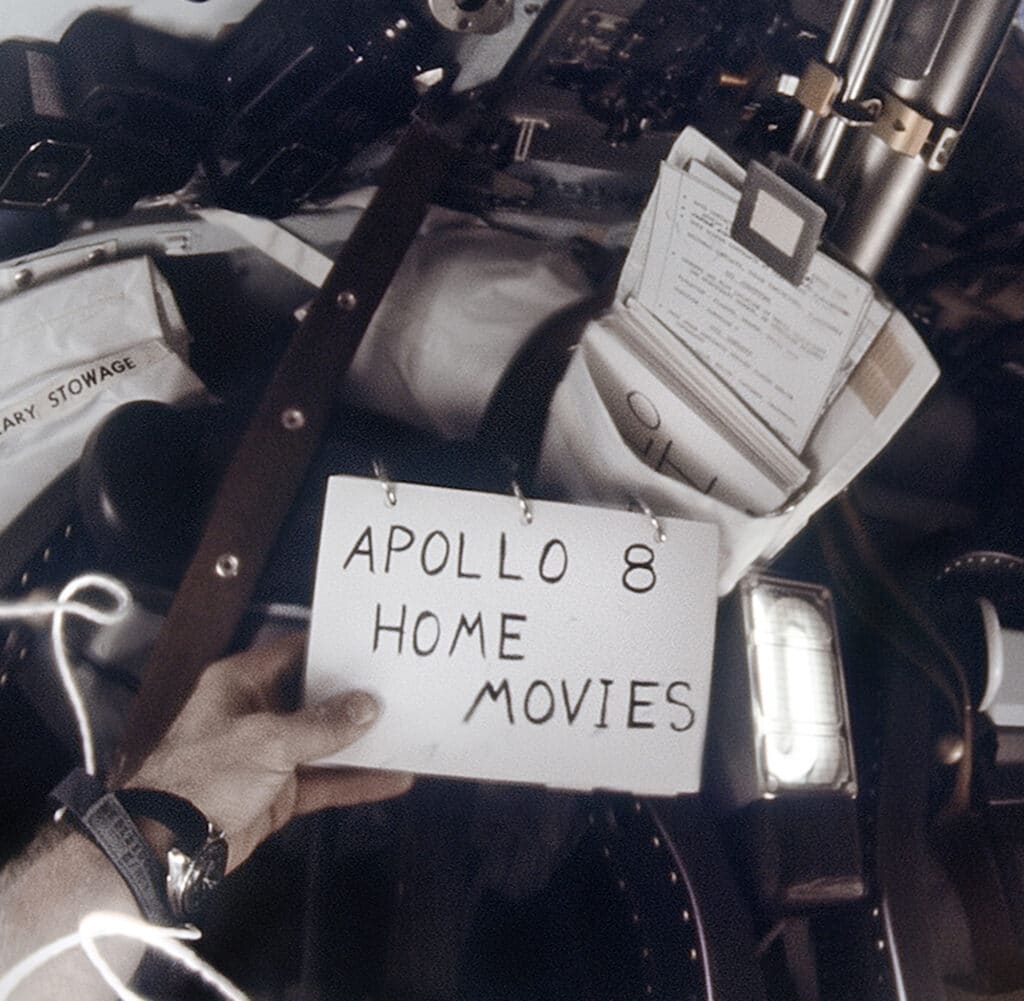
The Artemis missions: back to the Moon
Apollo Remastered is the ultimate introduction to space photography, and a fitting release for the holiday season. This timely publication also coincides with the launch of the Artemis program, with a manned Mars mission as its ultimate goal. “Artemis imagery will of course be very different from our first trips to the Moon,” Saunders comments.
“In the digital age, we can capture an almost unlimited number of photographs, but back then we were limited to only 200 per magazine. Another key difference is that we won’t have to wait for the astronauts to return to Earth to see the incredible images. We’ll have a 4K live broadcast, a 360-degree field of view, virtual reality-controlled images.”
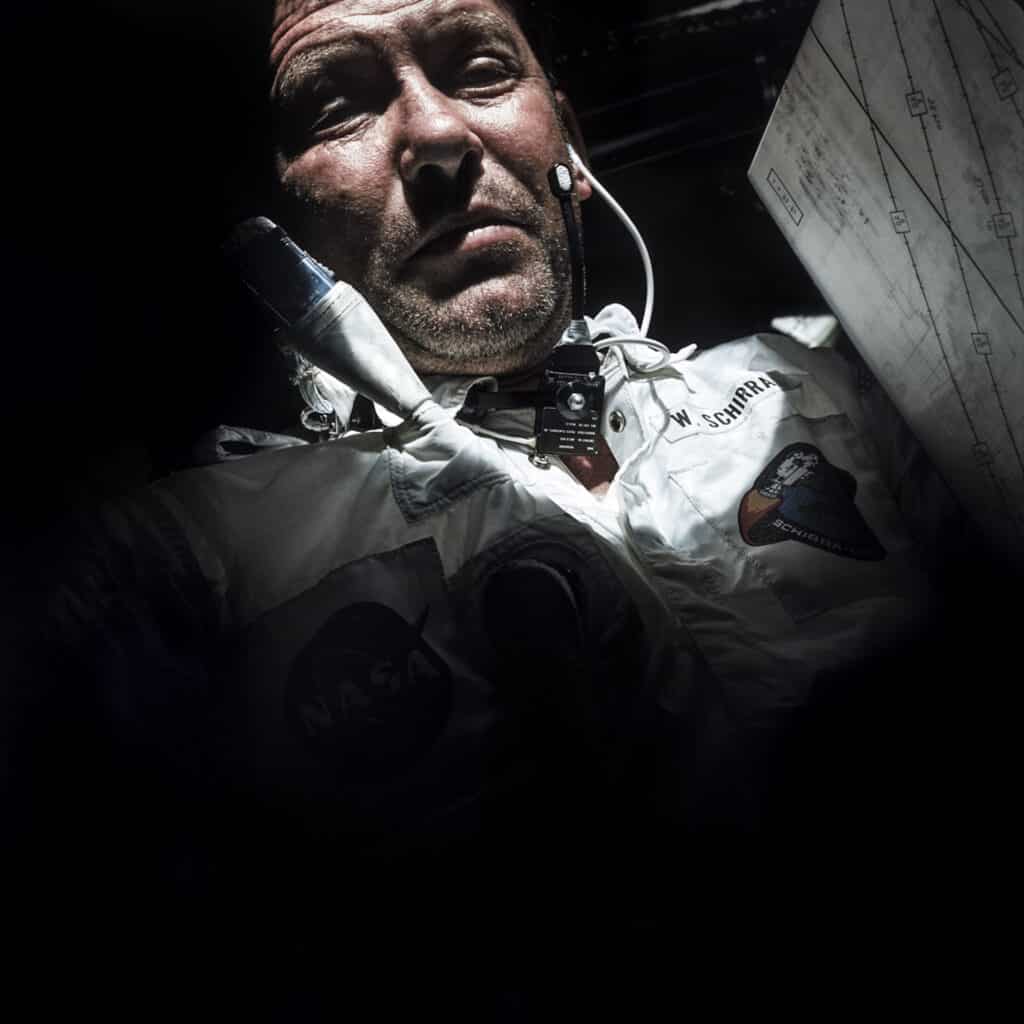
The objective of those future lunar missions is to establish a permanent human presence on this natural satellite and in orbit by the end of the decade. “I hope that public use photography will be more on the agenda than it was at the time of the Apollo missions, and that we will remember the photo of the first woman on the Moon! For all that, can Artemis and digital photography really match the romance of the old analog films documenting that golden era of the 1960s pioneers? That remains to be seen.”
In his next projects, Saunders continues his personal journey to zero gravity and is preparing a prequel book about Gemini (ten flights). “The astronauts used a Hasselblad Superwide Camera (SWC), which generates truly unique images. This exceptional photography will focus this time on our beautiful Earth, rather than the spectacular Moon.”
Andy Saunders, Apollo Remastered, Black Dog & Leventhal Publishers, 300 images, 18 color foldouts, 432 pp., $75
